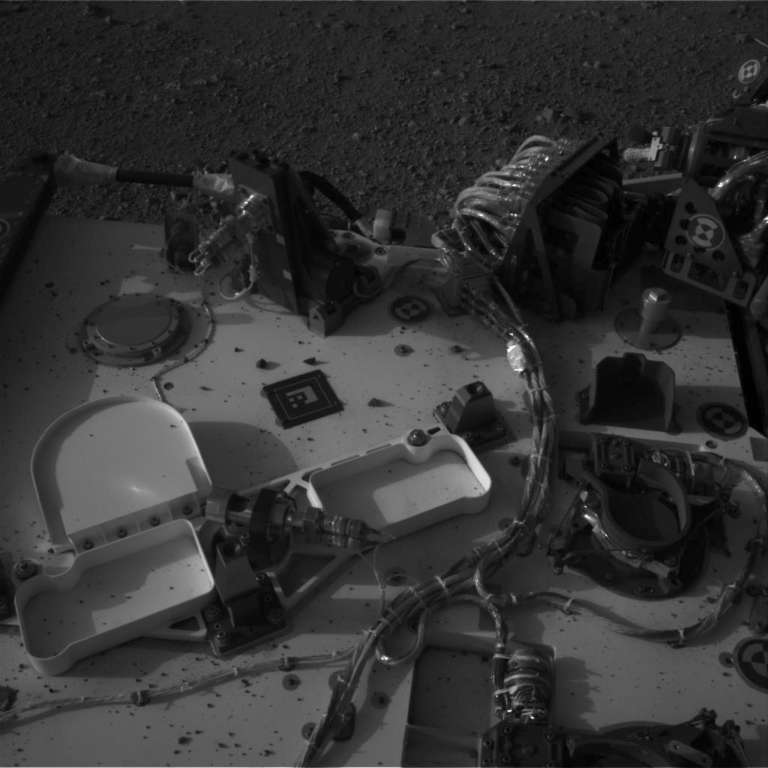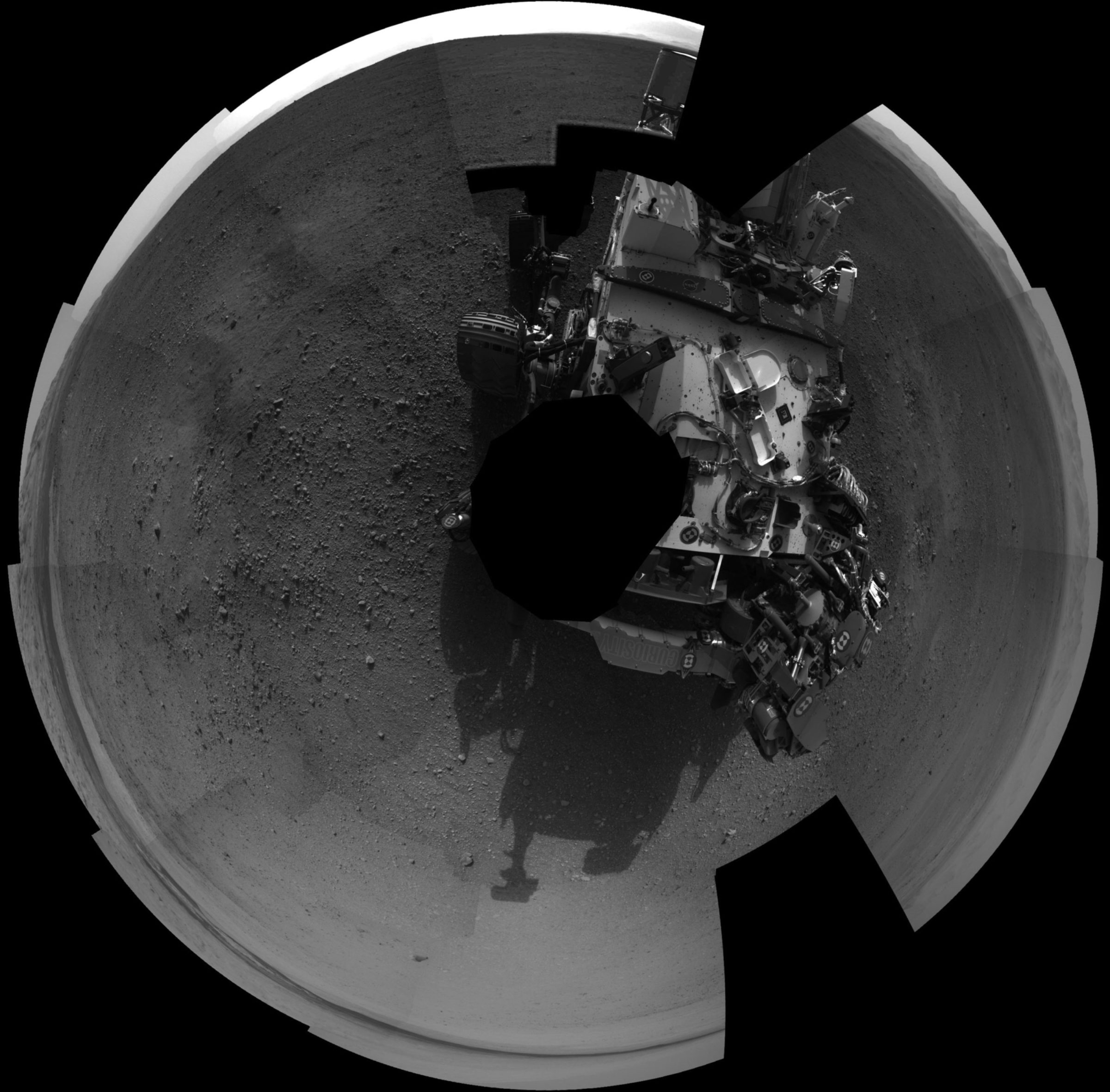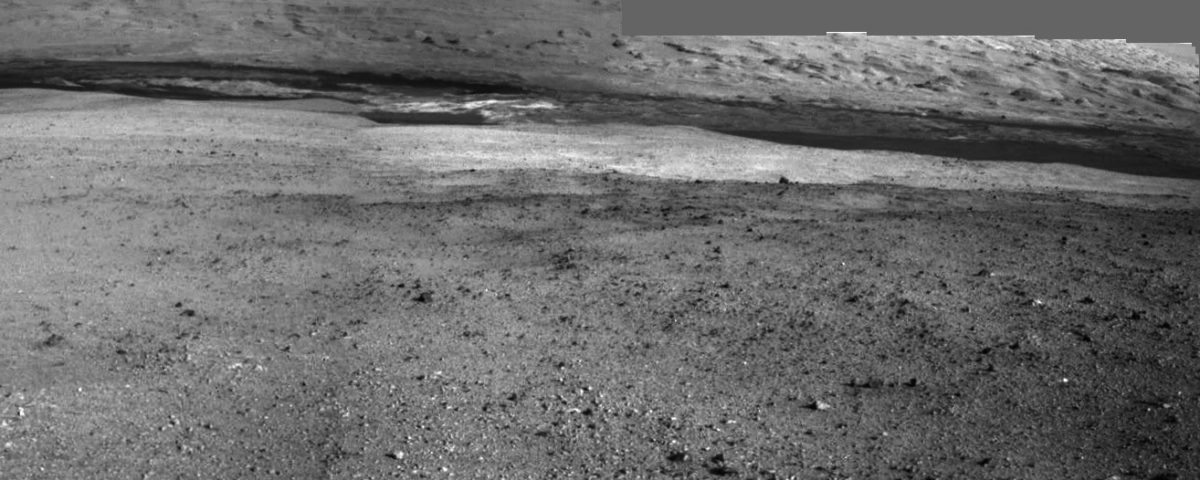Emily Lakdawalla • Aug 09, 2012
Curiosity: Most of sol 2 Navcam panorama, plus 18 full-res Descent Imager frames available
I waited all day for these images to appear on the Curiosity raw image website, and they're finally here. It's past my bedtime; but how can I not play with these images? And holy guacamole, is it a pretty place we've dropped this big beast of a rover into!
Where to start? First, I've been very curious to see how much of the dust that was disturbed during the landing settled on top of the rover deck. It actually looks less dusty than I expected -- but look at the size of the gravel on top of it!

Here's a terrific mosaic of the Navcam images that have come down so far. This is a rover that has just touched down at a new place on Mars. It's still blowing my mind.

There's two frames missing and one that was partially transmitted, but it's quite enough to feel the rover sitting on the surface of Mars. What I find particularly striking about this point of view is the way that the Navcam can see right through the gap separating the rocker-bogie assembly (the big titanium tubes that support the rover's wheels) from the rover body. The rocker-bogie assembly is connected to the body only at a single pivot point, with the two rockers connected through a differential across the top of the rover. I've never found it easy to understand how this works so well to keep the rover body level while the wheels climb obstacles larger than the wheel diameter, but it does work.
Next, let's look to the south, to that mountain that we want to climb. The Navcams do not reach high enough to see the top of the mountain yet -- that'll have to wait for another day. But if you zoom in on the part of it that you can see, there is a lot to be excited about. The dark lines are the sand dunes that we want to avoid. Mixed in with them is some other kind of surface that is quite bright. The changes in albedo (brightness) as you go from the medium tone in the foreground to the bright tone int he middle ground over the black dunes to the medium toned base of the mountain to the brighter knobbly hills really is thrilling. Why? Because Mars tends to be so monochromatic due to the ubiquitous dust. If we can see albedo changes like this, it can't all be covered in dust, or at least it's not very much dust. We're in a very non-dusty place, where the soil and rocks are laid bare, showing us their different colors.

Can we start driving yet? Now? Please?
I don't want to forget to show you the awesome full-resolution MARDI images. In the first one, with the heat shield just fifteen meters from the rover, you can see the wiring and the stitching on the thermal blanket. They're mind-boggling. I don't have time to do much with them right now -- I've got to sleep at some point -- but here are direct links to all of the full-res images that are down so far, for your viewing enjoyment.
Frame 36 (5:15:30)
Frame 72 (5:15:39)
Frame 124 (5:15:52)
Frame 200 (5:16:12)
Frame 256 (5:16:26)
Frame 316 (5:16:41)
Frame 372 (5:16:55)
Frame 440 (5:17:13)
Frame 476 (5:17:22)
Frame 512 (5:17:31)
Frame 564 (5:17:45)
Frame 600 (5:17:54)
Frame 688 (5:18:16)
Frame 784 (5:18:41)
Frame 828 (5:18:52)
Frame 888 (5:19:08)
Frame 960 (5:19:26)
Frame 1008 (5:19:39)
Support our core enterprises
Your support powers our mission to explore worlds, find life, and defend Earth. You make all the difference when you make a gift. Give today!
Donate

 Explore Worlds
Explore Worlds Find Life
Find Life Defend Earth
Defend Earth

